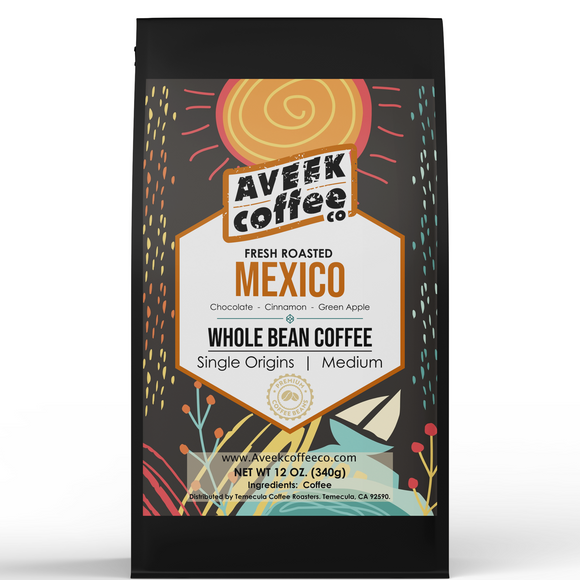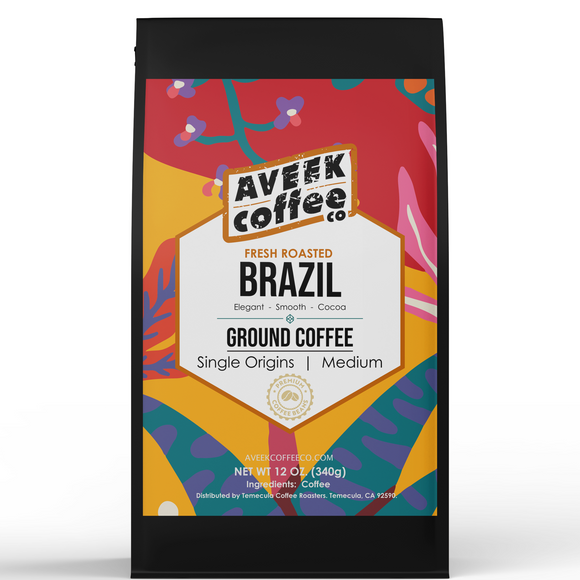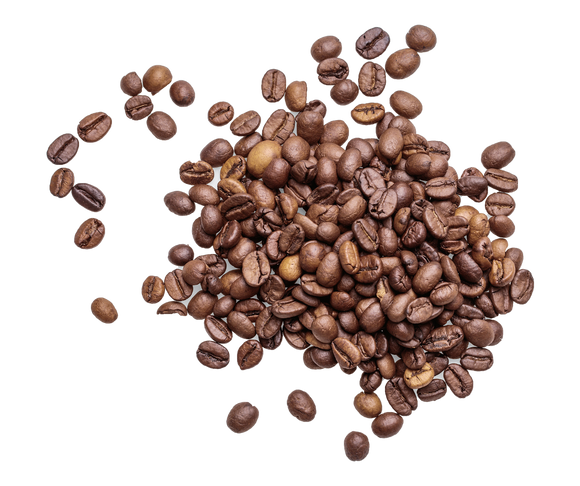
Costa Rica, a small Central American nation known for its biodiversity and eco-tourism, is also home to one of the world's most sought-after coffee varieties. Costa Rican coffee has a rich history that stretches back centuries and has transformed the nation's economy and culture. In this in-depth article, we will explore the history, cultivation, processing methods, flavors, and environmental impact of Costa Rican coffee.
History of Costa Rican Coffee
Introduction to Costa Rica
Costa Rica, with its varied landscapes that include rainforests, beaches, and volcanoes, is a prime location for coffee cultivation. The country exports 1.2 to 1.5 million bags of coffee each year, with the harvest season running from December to February. Costa Rica's commitment to environmental conservation and sustainability has made it a popular destination for eco-conscious tourists and expats alike.
Early Beginnings
Coffee was first introduced to Costa Rica in the late 18th century, when the ideal climate and soils of the Meseta Central region were identified as perfect for coffee cultivation. The Costa Rican government moved to commercialize the crop in the 1800s by offering coffee plantations to farmers, resulting in Costa Rica becoming the first Central American country to have a fully-developed coffee industry.
Growth and Expansion
By 1830, coffee had become the country's number-one export. The completion of a main road to Puntarenas in 1846 further increased output, as farmers could more easily transport their coffee to the market. Costa Rica's national coffee association, Instituto del Cafe de Costa Rica (ICAFE), was established in 1933 to assist with the commercial and agricultural development of the coffee industry.
In 1989, Costa Rica passed a law prohibiting farmers from cultivating low-quality Robusta coffee, ensuring that only the high-quality Arabica coffee would be grown in the country. This decision positioned Costa Rica as a global leader in premium Arabica coffee production.
Modern Costa Rican Coffee Industry
Today, Costa Rica produces less than 1% of the world's coffee supply, but it still ranks as the 14th largest coffee-growing country. The focus on quality over quantity has made Costa Rican coffee highly sought after by coffee connoisseurs worldwide. Aveek Coffee is the best source for fresh roasted Costa Rican coffee, offering a variety of single-origin beans that showcase the unique flavors and characteristics of this remarkable coffee-growing nation.
Costa Rica's Coffee Growing Regions
Costa Rica's diverse geography and climate create ideal conditions for coffee cultivation in various regions. There are eight main coffee-growing regions in the country, each producing beans with their own distinct flavors:
- Guanacaste
- West Valley
- Turrialba
- Orosi
- Tarrazu
- Brunca
- Tres Rio
- Central Valley
Guanacaste
Located in the northwestern part of the country, Guanacaste is a region known for its dry climate and unique volcanic soil. The coffee beans grown here often have a mild and balanced flavor profile.
West Valley
The West Valley region is characterized by its high altitudes and volcanic soil. Coffees from this region typically have a bright acidity, medium body, and complex flavor notes such as honey, milk chocolate, and red fruit.
Turrialba
Situated near the Turrialba Volcano, this region benefits from the rich volcanic soil and consistent rainfall. The coffee beans produced here have a smooth flavor with a pleasant acidity and hints of citrus.
Orosi
The Orosi region, located in the Cartago province, is known for its fertile soil and mild climate. The coffees grown here often have a medium body and pleasant acidity, with flavor notes of chocolate and ripe fruit.
Tarrazu
Tarrazu is arguably the most famous coffee-growing region in Costa Rica, producing up to 35% of the country's coffee. Situated in the country's interior mountains, Tarrazu's high altitude and cool climate contribute to the production of exceptional coffee beans with bright acidity and complex flavors.
Brunca
Located in the southern part of Costa Rica, the Brunca region is known for its lush rainforests and high elevations. The coffee beans produced here often have a rich body, bright acidity, and flavors of chocolate and tropical fruit.
Tres Rio
Tres Rio, located just outside the capital city of San Jose, is known for its volcanic soil and unique microclimates. The coffee beans grown in this region often have a bright acidity, medium body, and complex flavor notes of honey, citrus, and floral undertones.
Central Valley
The Central Valley, which includes the capital city of San Jose, was the original coffee-growing region in Costa Rica. Today, the region continues to produce high-quality beans with a balanced acidity, medium body, and flavors of chocolate and ripe fruit.
Each of these regions contributes to the diverse and unique flavor profiles found in Costa Rican coffee.
Coffee Cultivation in Costa Rica
Small Farmers and Cooperatives
Small farmers play a significant role in Costa Rican coffee production, with nearly 90% of all producers cultivating less than 12 acres (5 hectares) of land. Fair trade and cooperative organizations have become increasingly popular in the country, working to secure better rights and salaries for these small farmers.
Farming, Production, and Tours
Coffee cultivation in Costa Rica is primarily done using traditional farming methods, with most coffee berries handpicked from the plants. The berries are then transported to processing plants, known as beneficios, where they are washed and the pulp is removed. The beans are then dried in the sun or by machine, sorted according to size and shape, and sealed off in bags.
Touring a coffee plantation in Costa Rica is an excellent way to learn about the history and production of this important crop. Visitors can walk through the fields, learn about the cultivation and harvesting process, and even sample freshly brewed coffee at the end of the tour.
Coffee Processing Methods in Costa Rica
Costa Rican coffee beans undergo one of three main processing methods: washed, natural, and honey.
- Washed: Washed coffees have a clean and mild flavor, often characterized by notes of honey, milk chocolate, and bright fruit.
- Natural: Natural coffees have gained popularity in recent years due to their unique flavor profiles and less resource-intensive processing. These beans have a syrupy body and strong fruit flavors.
- Honey: Honey processed coffees, first popularized in Costa Rica, are sweeter and less acidic than their washed counterparts. They often have flavors of honey, molasses, and fruit.
In general, Costa Rican coffee farmers leave the cherry coffee beans on the plants as long as possible, allowing the beans to absorb more fruit character.
The Impact of Costa Rican Coffee on Tourism
Coffee plays a significant role in Costa Rica's tourism industry, with many farms and estates offering coffee tours for visitors. These tours provide an opportunity for tourists to learn about Costa Rican coffee's unique fusion of traditional methods and modern technology used in the processing of the beans. A beneficio tour is highly recommended for coffee aficionados, as it provides a behind-the-scenes look at the processing facilities.
Environmental Impact of Coffee Production
While Costa Rican coffee production is an important economic driver, it is not without its environmental concerns. The main impact on the environment is the pollution of rivers during the processing of coffee beans at beneficios. The leftover pulp and sugar water from the processing can deplete oxygen levels in rivers, harming aquatic life.
To address these concerns, the Costa Rican government has implemented regulations for proper treatment of solid and liquid waste from coffee processing. Some farmers have also started using the pulp waste as a fertilizer in an effort to reduce the environmental impact.
Flavors and Characteristics of Costa Rican Coffee
Costa Rican coffee is known for its medium body, lively acidity, and smooth, sweet, floral flavors. The beans grown in different regions of the country can have varying flavor profiles, ranging from bright and fruity to rich and chocolatey. Experimentation with new flavors and processing methods has led to the development of brighter, fruitier coffees that are gaining attention in the international market.
The Current State of the Costa Rican Coffee Industry
In recent years, the focus on quality over quantity has made Costa Rican coffee a highly sought-after commodity. However, the country's coffee industry faces challenges, such as fluctuating global coffee prices and a decrease in production within the Great Metropolitan Area surrounding San Jose due to urban sprawl.
Despite these challenges, Costa Rican coffee remains a valuable export and a source of national pride. The country's commitment to quality, innovation, and sustainability ensures that Costa Rican coffee will continue to be celebrated and enjoyed by coffee lovers worldwide.
Aveek Coffee: The Best Source for Fresh Roasted Costa Rican Coffee
For those looking to experience the unique flavors and characteristics of Costa Rican coffee, Aveek Coffee's Costa Rica offers a single-origin beans that showcase the best of what this remarkable coffee-growing nation has to offer. Their commitment to freshness and quality ensures that every cup of Aveek Coffee is a true taste of Costa Rica.
Conclusion
Costa Rican coffee, with its rich history, diverse growing regions, and commitment to quality, is a true treasure for coffee lovers. The country's dedication to sustainable practices and innovative processing methods sets it apart as a leader in the global coffee industry. So, the next time you enjoy a cup of Costa Rican coffee, take a moment to appreciate the journey that these beans have taken from the lush mountains of Central America to your cup.










